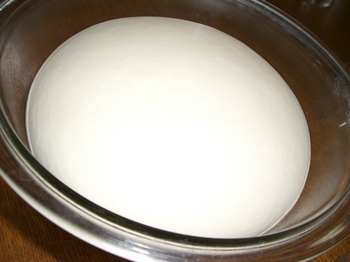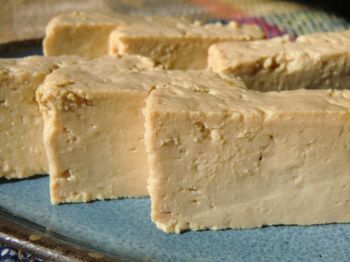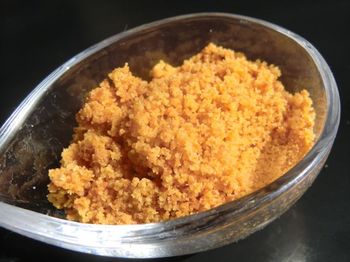Vegan Stew with Sake Lees 粕汁 [Recipes, Winter 冬レシピ]
日本語のレシピは ビーガン情報サイト "Hachidory" を ご覧ください。
The colder the weather becomes, the clearer the sky becomes.
That is the characteristic of winter in Kanto area of Japan.
Though the cold air sometimes makes me sigh,
the bright blue sky also does so when I look it up.
That is the best part of winter here.
The other day, I spent a few hours for driving to see Mt. Fuji.
Mt. Fuji looks most beautiful in winter.
It was freezing cold there, and I had the coldest sensation I've ever had.
But Mt. Fuji was just breathtaking.
That was the most beautiful Mt. Fuji that I had ever seen.
"Magnificent", "Godlike". Those were the words that came up to me.
Mt. Fuji and Lake Yamanakako
I do recommend you to visit Fuji 5 Lakes to view this stunning view of Mt. Fuji if you visit Japan in winter.
Yes, it is still very cold in the morning here.
So I am going to introduce you another poka poka dish for you today.
(poka poka is an onomatopoeia to express the feeling or sense that make us warm and comfortable.)
There is an important ingredient for it.
That is "Sakekasu".
"Sakekasu " is the by product of sake/ Japanese rice wine, and this word is usually translated to "rice wine lees".
During sake making process, there is a stage that wine is extracted from the fermented rice by pressing.
"Sakekasu" is the ramainder left in the bag.
Unlike soy pulp which is the by-product of soy mik, "sakekasu" has creamy texture, and it has an alcoholic smell as you may be imagining.
It is a mighty ingredent for my cooking.
It can
turn the soy milk into yoghurt,
raise the bread dough working as a yeast,
It can aso produce cheesey texture and taste.
Thererfore I can make
vegan yoghurt
tofu cheese
vegan cheese cake
vegan parmesan cheese
with "Sakekasu".
I am going to show you how to make a traditional and most popular sakekasu dish in Japan today.
As it is such a unique ingredient, I have not found any replacement for sakekasu.
So this recipe can be replicated if you can get the "sakekasu".
Kasujiru / Vegan Stew with Sake Lees
Ingredients ( for 4 servings)
200g daikon/radish - chop into rough chunks
100g ninjin/carrot - chop into rough chunks
100g renkon/lotus root - chop into rough chunks
4 satoimo / taro - peel and cut into halves
4 hoshishiitake/dried shiitake mushroom - soak for a few hours, cut into quarters. put the juice aside for later use
1 stalk naganegi / leek - cut into an inch diagnals
1 aburaage / fried tofu - blanch in boiling water to remove oxidised oil, and cut into rough chunks
1/2 bunch shimeji mushroom
1/2 bunch enoki mushroom
1/2 cake of firm tofu - chop into chunks
40g sakekaksu / sake lees - soak in hot water to soften
80g shiromiso / white miso
1L kobudashi / dried kelp soup stock
toasted sesame seeds - grind
dash of shichimitogarashi / dried Japanese chili and spices (optional)
Procedure
Blend sakekasu/sake lees and shiromiso/white miso. You can use a morter and a pestle or an electric blender for this job.
mixture of Sakekasu and white miso
Place prepared daikon/radish, ninjin/carrot, renkon/lotus root, satoimo/taro and dried shiitake mushroom in kobudashi/dried kelp soup stock and heat up.
Remove aku/foam over surface when it reached the boiling point.
Cover the lid and reduce the heat to low, and simmer until the vegetables soft.
Add naganegi/leek and aburaage/fried tofu, shimeji and enoki mushroom, and cook another 5 minutes.
Add tofu and the mixture of sake lees and white miso, and mix well.
Serve in a bowl and top up with grinded sesame seeds.
Sprinkle shichimitogarashi/Japanese dried chili with spices to suite your taste.
Tips
This recipe is suitable under cold climate.
The vegetable can vary. Use the seasonal ones grown where you live.
"Sakekasu" can be kept in the freezer for a year, but the power decreases with the time goes by, and it may not ferment easily if you want to use it for yoghurt or bread making.
I recommend you to get the freshly pressed sakekasu in winter. (Sake, rice wine is made in winter.)
Happy Cooking !
.jpg)
.jpg)
.jpg)
.jpg)
20750x562.jpg)

20750x.jpg)


_00001.jpg)
.jpg)
.jpg)
.jpg)
.jpg)





コメント 0